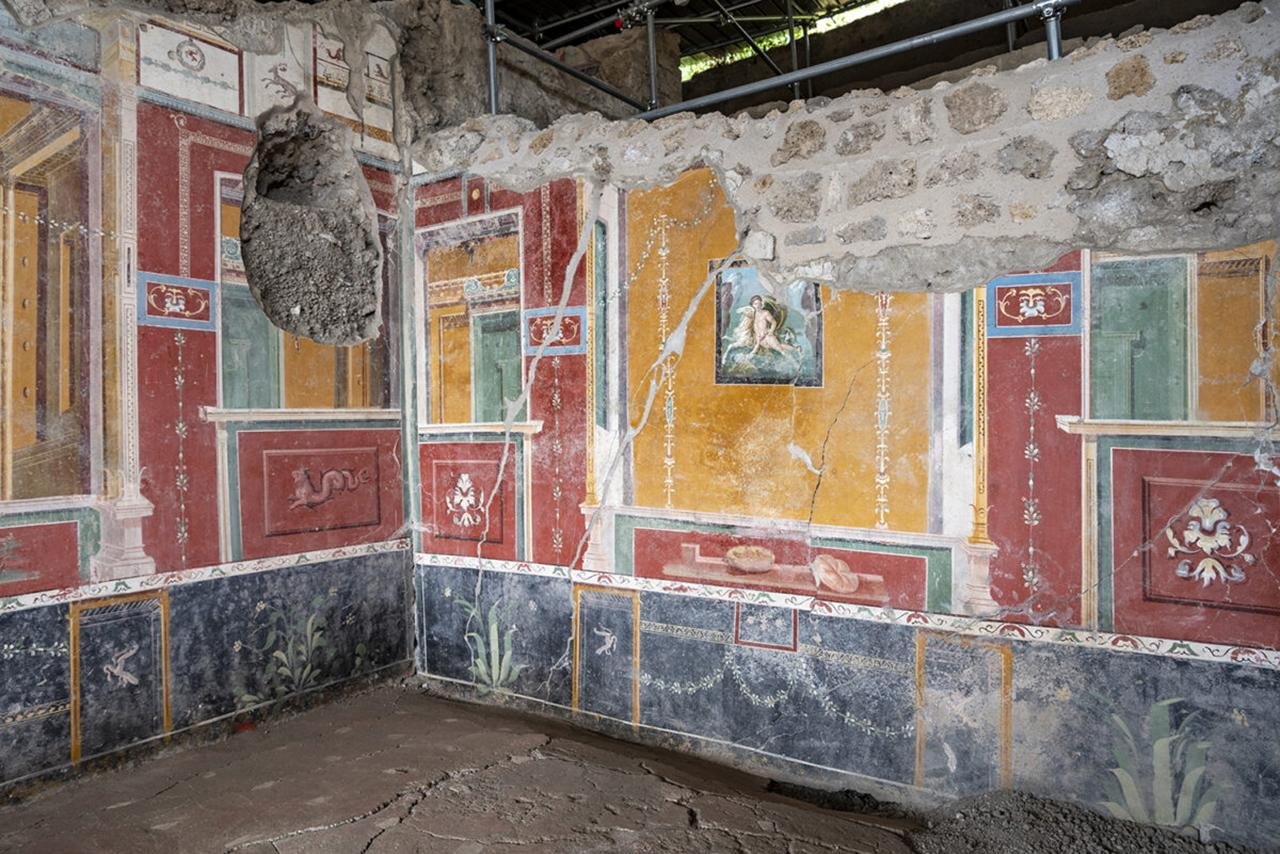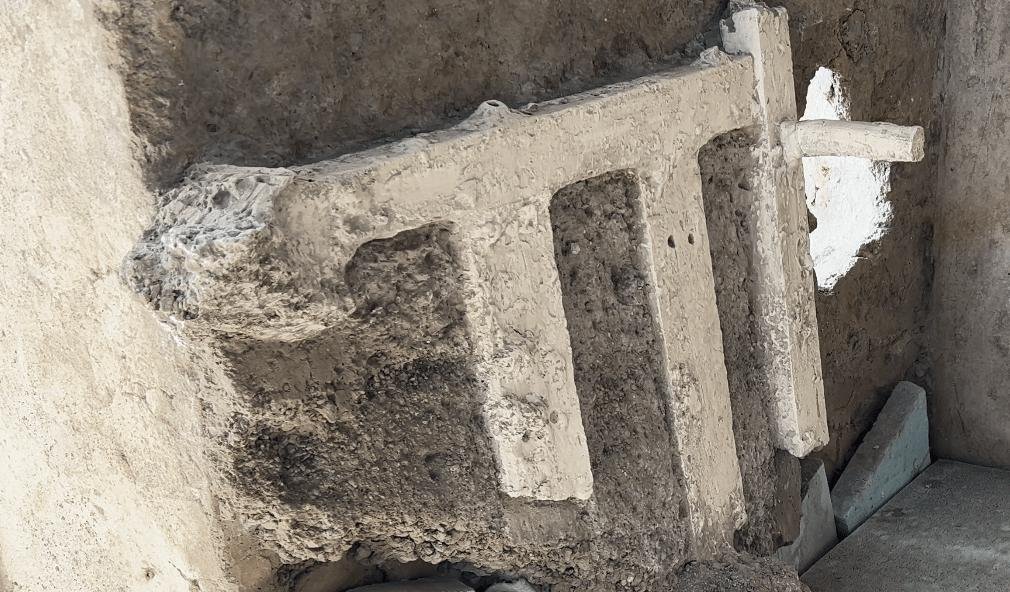Archaeologists have unearthed the grim final moments of a Pompeii family in the House of Helle and Phrixus, offering a poignant glimpse into life—and death—during the devastating eruption of Mount Vesuvius in 79 CE. The discoveries, published in the E-Journal of the Pompeii Excavations, reveal a desperate attempt at survival as volcanic forces engulfed the city.
 The decoration of Phrixus and Helle’s house. Courtesy of the Archaeological Park of Pompeii
The decoration of Phrixus and Helle’s house. Courtesy of the Archaeological Park of Pompeii
The house, a mid-sized Roman domus on the Via del Vesuvio, contains richly decorated rooms, including an atrium with an impluvium (rainwater basin), triclinium (dining room), and bedroom. The house is so named because of a fresco in the triclinium illustrating the mythological scene of Phrixus and his sister Helle. The artwork, depicting Helle’s tragic fall into the sea while fleeing on a winged ram, was likely chosen to signal the homeowner’s cultural sophistication and status—a common practice among the middle and upper classes of Pompeii.
As the eruption was occurring, lapilli—small, fiery volcanic stones—fell through an opening in the roof above the atrium. As the volcanic debris filled the house, its occupants took refuge in a bedroom and barricaded the door with a wooden bed in a futile effort to stay alive. The form of this bed was later recovered by plaster casting, a method that fills the space left by decomposed organic material.
 Remains of the bed used to barricade the entrance. Courtesy of the Archaeological Park of Pompeii
Remains of the bed used to barricade the entrance. Courtesy of the Archaeological Park of Pompeii
In the room, archaeologists found the skeletal remains of at least four individuals, including a child. Next to the child’s remains was a bronze bulla—a kind of amulet that Roman boys wore until they came of age. The presence of this item is a stark reminder of the lives that were abruptly lost.
Among the other artifacts discovered at the site are amphorae used to store garum, a fermented fish sauce the Romans loved, and a fine set of bronze kitchenware: a ladle, a single-handled jug, a basket-shaped vessel, and a shell-shaped cup. Some were neatly stored under a staircase that was being utilized as a pantry.
The excavation also revealed that the house was undergoing renovations when the eruption took place. Missing thresholds, undecorated areas, and cut marks in the masonry all speak to work in progress—evidence that despite disruption, the family chose to remain.
 Human remains found inside the house. Courtesy of the Archaeological Park of Pompeii
Human remains found inside the house. Courtesy of the Archaeological Park of Pompeii
Archaeological Park of Pompeii Director, Gabriel Zuchtriegel, reflected on the emotional weight of the discovery. He said, “To excavate Pompeii and visit it means confronting the beauty of art but also the fragility of our lives. In this small, well-decorated house, we found traces of the inhabitants who tried to save themselves, blocking the entrance of a small room with a bed. They didn’t survive. Finally, the pyroclastic flow arrived—a violent wave of scorching ash that filled every room.”
That final pyroclastic surge, with temperatures between 180 and 360 degrees Celsius, at last sealed the fate of the home’s residents. The eruption claimed their lives, but their story—recorded in ash and stone—continues to resonate.
Through ongoing conservation efforts, the House of Helle and Phrixus, and surrounding areas like the House of Leda and the Swan, will be open to the public shortly.
More information: Parco Archeologico di Pompei
M. Rispoli, M. Tartari, G. Zuchtriegel, Disastri stratificati: nuovi dati dalla Casa di Hele e Frixo – Regio V, insula 6, civico 10. E-Journal Scavi di Pompei 30.04.25





